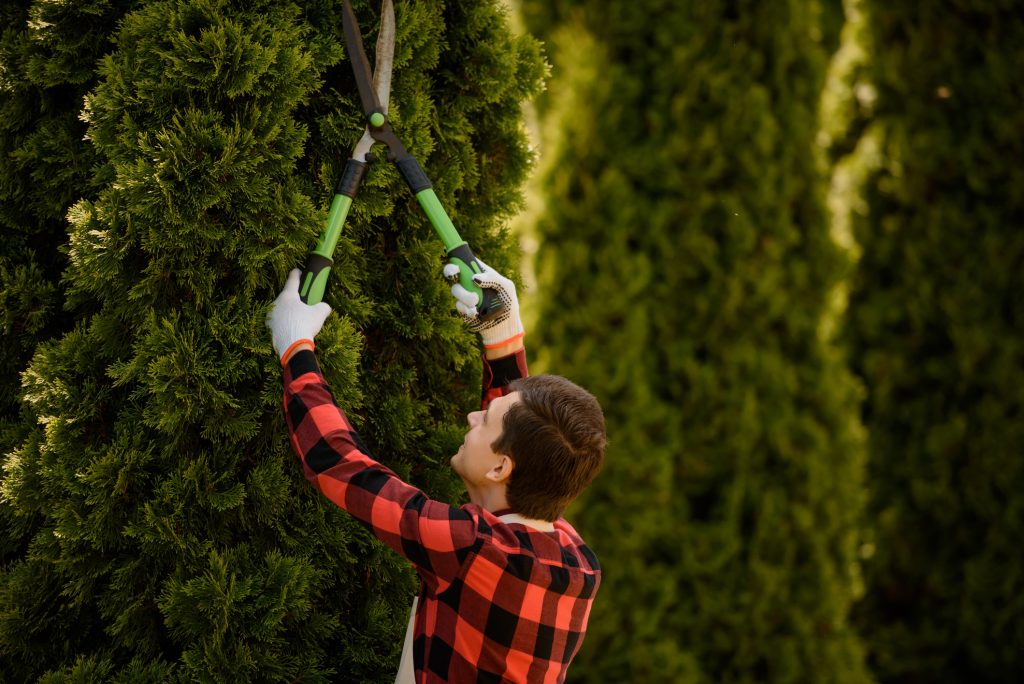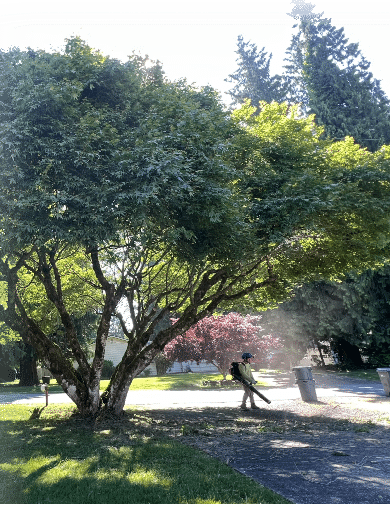Tree care is both an art and a science, requiring a delicate balance of knowledge and skill. Whether you’re a homeowner tending to your backyard oasis or a professional arborist shaping urban landscapes, mastering the art of tree trimming is essential for maintaining tree health and promoting optimal growth. This guide will take you through the fundamentals of tree maintenance, covering everything from understanding tree biology to the various pruning techniques used by professionals. By the end, you’ll be equipped with the knowledge and confidence to prune like a pro and enhance the beauty and vitality of your trees.
1. Understanding Tree Biology:
Before diving into pruning techniques, it’s crucial to understand the biology of trees. Trees are complex living organisms with unique structures and growth patterns. They rely on sunlight, water, nutrients, and proper pruning to thrive. Key components of tree biology include:
– Branches and Growth Habits: Trees have different branching patterns and growth habits, such as upright, spreading, weeping, or columnar. Understanding these habits helps determine how and where to prune for optimal results.
– Tree Species: Different tree species have varying growth rates, susceptibility to diseases, and response to pruning. Knowing the specific characteristics of the trees you’re working with is essential for effective pruning.
– Seasonal Growth: Trees exhibit seasonal growth patterns, with periods of active growth and dormancy. Timing your pruning efforts based on these growth cycles can influence tree health and recovery.
2. Pruning Tools and Safety:
Before embarking on any tree-shaping endeavor, gather the necessary tools and prioritize safety precautions. Essential pruning tools include
– Pruning Saw: Used for larger branches or limbs that require more substantial cuts.
– Safety Gear: To protect yourself from falling debris, wear gloves, eye protection, and a hard hat.
– Ladder: For reaching higher branches safely.
3. Types of Tree Pruning:
Tree shaping serves various purposes, from shaping the tree’s structure to removing damaged or diseased branches. Here are some common types of techniques:
– Deadwood Pruning: Removing dead or dying branches helps prevent disease spread and enhances the tree’s appearance.
– Thinning: Thinning involves selectively removing branches to improve airflow and light penetration within the canopy, promoting overall tree health.
– Raising: Raising the canopy by removing lower branches is useful for clearance over walkways, roads, or structures.
– Directional Pruning: Guiding growth by strategically pruning branches to encourage desired direction or shape.
4. Pruning Techniques:
Effective pruning techniques require precision and an understanding of tree biology. Follow these guidelines for successful tree pruning:
– Identify Branch Collars: The branch collar is the swollen area where a branch connects to the trunk. When pruning, cut just outside the branch collar to promote proper healing.
– Use Proper Angles: Cut branches at a slight angle just above a bud or lateral branch to encourage healthy regrowth.
– Avoid Over-Pruning: Removing too many branches at once can stress the tree and compromise its health. Follow the one-third rule: never remove more than one-third of a tree’s canopy in a single pruning session.
– Clean and Sharpen Tools: Sharp, clean pruning tools make precise cuts and reduce the risk of introducing infections to the tree.
5. Timing and Frequency of Pruning:
Timing is critical when it comes to tree pruning. The best time to prune varies depending on the tree species and the type of pruning required:
– Winter Pruning: Ideal for most deciduous trees during dormancy, as it minimizes stress and promotes vigorous spring growth.
– Summer Pruning is suitable for specific tasks like removing water sprouts or correcting growth issues. Avoid heavy pruning during summer to prevent sunburn and stress.
– Pruning Frequency: Young trees may require more frequent pruning to establish a strong structure, while mature trees benefit from periodic maintenance pruning.
6. Special Considerations:
Certain situations and tree characteristics require special attention during pruning:
– Diseased or Infested Trees: Prune infected branches to prevent disease spread, disinfect tools between cuts to avoid contamination.
– Storm Damage: After storms, promptly assess and prune damaged branches to prevent further harm and promote recovery.
– Tree Size: Large trees or those near structures may require professional arborist services for safe and effective pruning.
7. Aftercare and Maintenance:
After pruning, monitor the tree’s progress and provide proper care:
– Watering: Ensure adequate water for newly pruned trees, especially during dry periods.
– Mulching: Apply mulch around the base of the tree to retain moisture and regulate soil temperature.
– Regular Inspections: Periodically inspect pruned trees for signs of stress, disease, or new growth issues.
Mastering the art of tree trimming requires knowledge, practice, and a deep understanding of tree biology. By familiarizing yourself with pruning techniques, safety precautions, and seasonal considerations, you can enhance the health and beauty of your trees while promoting safe and sustainable landscaping practices. Whether you’re shaping ornamental trees in a garden or maintaining urban forests, pruning like a pro is key to nurturing thriving tree ecosystems for generations to come.
Transform your trees with expert tree-trimming techniques! Partner with our experts at Cascade Tree Services to learn how to prune like a pro and promote tree health and beauty. Call us now at 425-530-9697 for any further inquiries.





